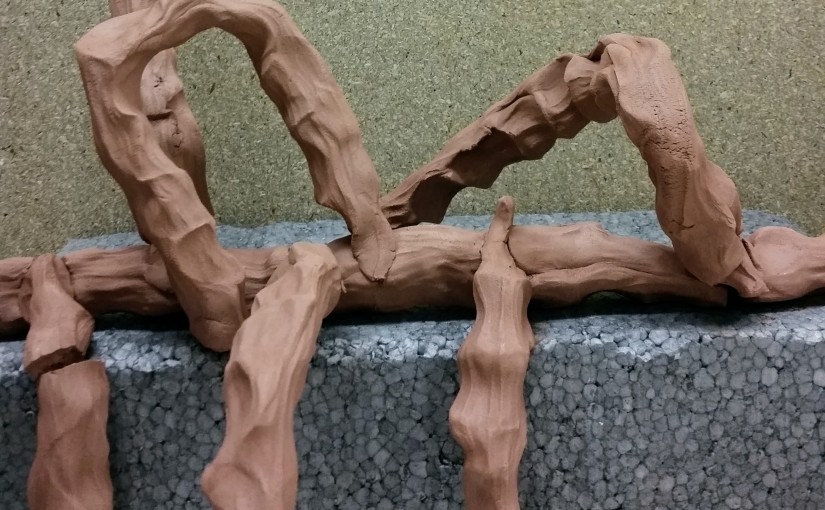Bridging my ceramic practice with gardening.
Exploring features, terms, and processes.

Joining the “Beginning Approaches” project with Masters, I took another opportunity for a more site specific project, to further explore ideas in my making.
Seeing huge number of polystyrene blocks being thrown away in the skip destined for eternal life on a landfill, I had to hoard a number of them to help me build big quickly.
For a while I had the urge to build higher and bigger and faster (since the workshop in G39 making rocks), and most importantlyI had the urge to build a pergola. As a classical garden feature, it has interesting connotations not only as a support and framework for growth, mostly for climbing or trailing plants. The word comes from the meaning of ‘coming or going forward’, as well as an ‘projecting roof or extension of roof’, creating an invitation and shelter for visitor or life; or creating a space within? A space in-between?
Balancing writing dissertation for assessment; I only had a few hour so build the pergola, so a quick sketch, grab of some wooden sticks and saw from a workshop, and a tall flimsy structure was erected. I definitely need to work on my skills (mostly structural) when working with block of polystyrene, but I think I want to refine it, as I prefer it to the more lengthly, time and material consuming chicken wire and papier-mâché.
I explored nineteen different terms/words that a hypothetical ‘Ceramic Gardener’ would use. I hope they will be able to guide me in my processes as well as become a language to talk about my art.
Deciduous Bolting Broadcast Cloche Cordon Cross-pollination Cultivate Fertilise Germination Grafting Haulm Mulch Pergola Planting Pollination Propagate Prune Rake Rhizome Sap
My main approach in building is kind of skin grafting – joining clay slabs slapped on my palm by pinching and smoothing them together. The final form retains the texture from my palm – bulging veins travelling through the surface, only to be interrupted by delicate circular imprints of my fingers as I pinch the slabs together, pushing the vein like lines underneath.
Another approach I enjoy is making coils by controlled squeezing of the clay in my fists. It produces rather uneven coils but full of tension, movement, with regular texture and angulations created by my palm’s wrinkles and fingers. The result looks a branch like, however others mentioned fingers themselves or bones even. They are perfect to cut with pruning shears!
I feel I need to have more time to be playful and diversities my approaches interacting with clay, as gardening is not just about one process. Tutorial with Duncan made it even more clear, with good suggestion of using a throwing wheel too, and looking at primary sources too.






